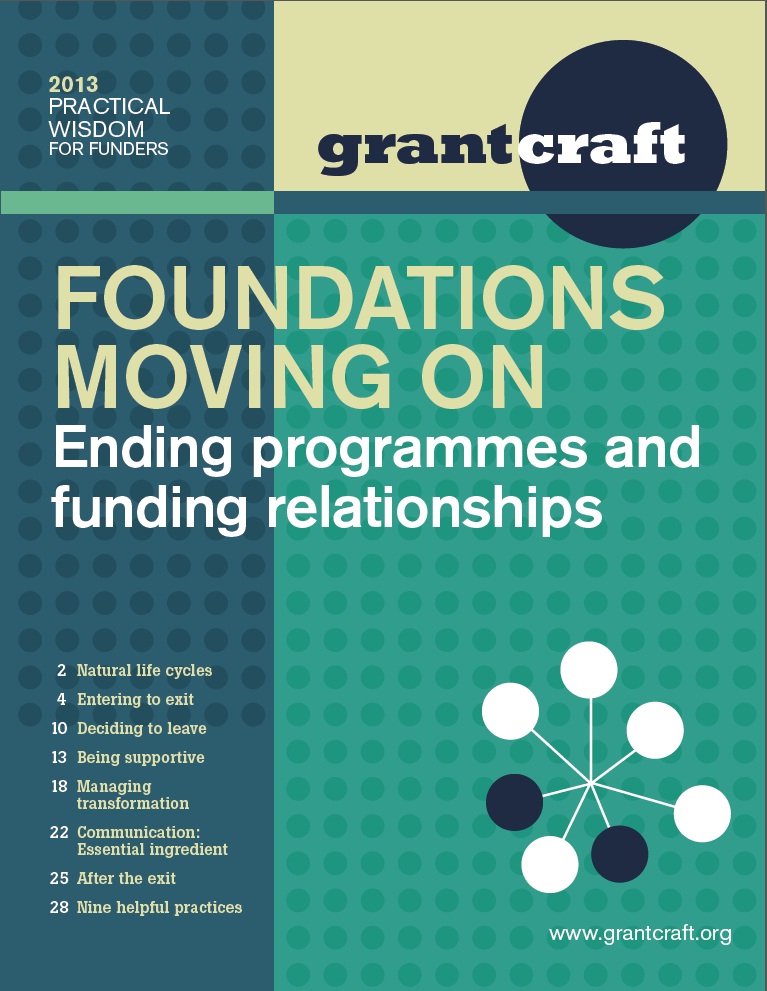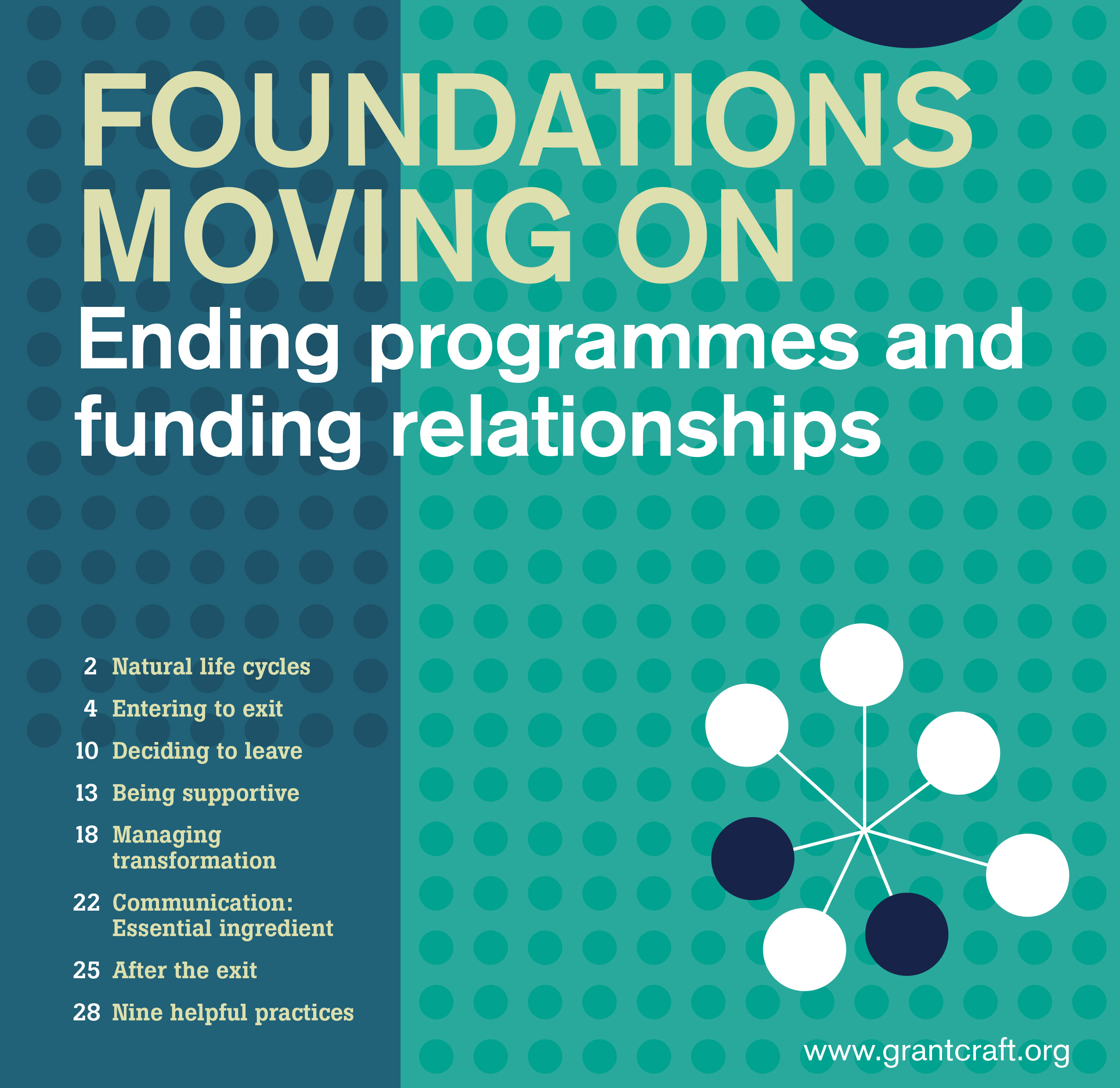Foundations Moving On: A New Guide on Exits
 Funders struggle with endings more than with entries. Yet, we seem have a lot of tools to support decision-making on giving grants, starting programs, entering fields and countries; however, we lack resources for developing strategies to move on. Do we actually invest enough time and thought in exits?
Funders struggle with endings more than with entries. Yet, we seem have a lot of tools to support decision-making on giving grants, starting programs, entering fields and countries; however, we lack resources for developing strategies to move on. Do we actually invest enough time and thought in exits?
Probably not. Funders can still improve their exit practices considerably. As a practitioner suggested: making a 'good' exit is not rocket science, but it can be complicated. In a GrantCraft webinar conducted last year, none of the participants actually felt the exit they had been involved with was well planned or executed, and nearly 60% said the exit may not have been a complete surprise but could have been managed better. To support funders in rethinking their exit practices, GrantCraft has launched a new guide on exit practices: Foundations Moving On: Ending programmes and funding relationships.
All funders somehow have to deal with exits. Venture philanthropist and limited-life or spend-out foundations tend to be very deliberate about exits, but other grantmaking or operating foundations also change strategic priorities, leave fields, or leave countries. And on a smaller scale, project funding ends automatically or – in rare cases – has to be withdrawn. You cannot wait for all the complicated questions to pop-up once an exit decision looms. And once you make and communicate a decision to exit, you need a lot of answers...
What should happen with the brand you developed when your pilot is being scaled-up by the government? Do you want researchers to be able to access your archives after you closed down your trusts? How can you best support soon-to-be-former grantees? Should you help them find a ‘replacement’ funder? How best to stay in touch? What happens with the URL? Who owns the infrastructure that was built? How much time do we give them? What if personnel has to be let go? How big should a reasonable endowment be?
To none of these questions does the new Grantcraft guide provides a blueprint-answer. Several funders shared how they answered them, but it is quite clear that there are no one-size-fits-all solution. The guide highlights helpful practices, but more importantly, I hope it triggers and feeds into internal discussions in foundations about how to improve exit practices. An interviewee observed that funders spend 90% of their time deciding which grantee or programme to support or not. She may have exaggerated, but it is true that beginnings come with positive emotions and we tend to dwell on those. Hopefully, this guide, together with your time, stimulates spending more time thinking through endings and making that a positive experience, too.
The new GrantCraft guide was launched today, 15 May, in Amsterdam at the annual ARIADNE Annual Policy Briefing hosted my Mama Cash, where a group of European funders invested in human rights and social justice reflected on the topic of planned and unplanned exits.
You can download the new guide for free. To download you only need to sign-in (or sign-up).
Let us know what you think about this guide: @GrantCraft #funderexits.
More in general, we love to know what you think about GrantCraft and how you use it. Please comment on this blog or mail us directly: [email protected] or [email protected].



